F-22 Deployment To Middle East Aimed Squarely At Russia In Syria
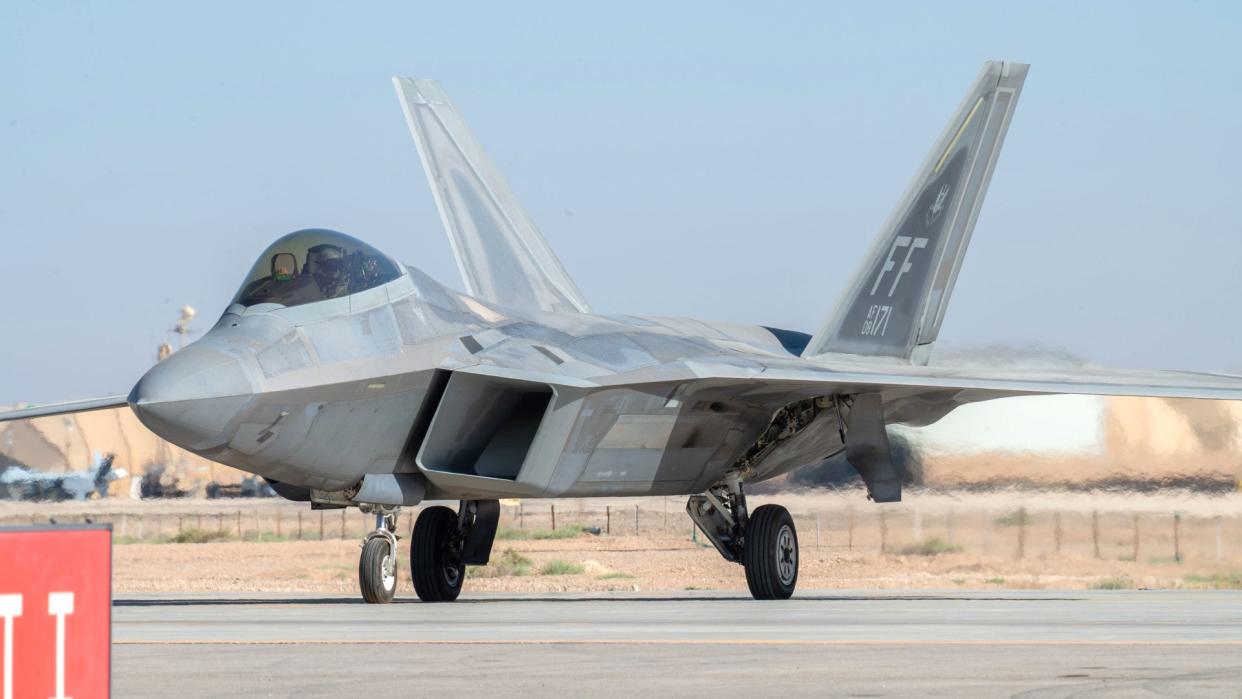
U.S. Air Force F-22 Raptor stealth fighters recently arrived in the Middle East as part of a broader and explicit show of force in direct response to actions in recent months by elements of the Russia's military in the region. American forces have been experiencing an uptick in unsafe and unprofessional Russian aerial activity in skies over Syria and this may be tied in part to Iranian support for the latter's war effort in Ukraine. That's the view of the Air Force's top commander in the Middle East.
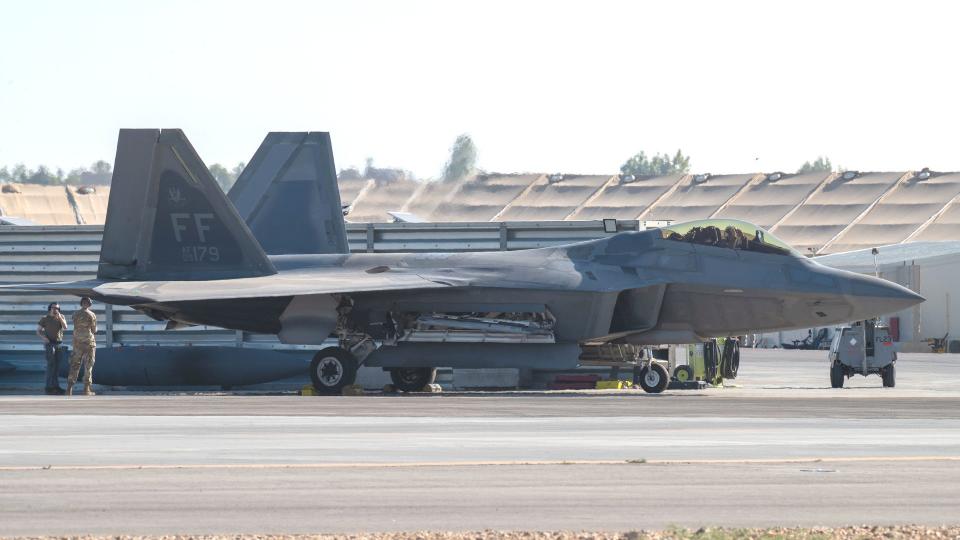
U.S. Air Force Lt. Gen. Alexus Grynkewich, head of U.S. Air Forces Central (AFCENT), gave an update on the situation in Syria during a virtual talk held today as part of Defense One's Tech Summit. Grynkewich has been increasingly outspoken for months now about this apparent surge in Russian jets flying aggressively in the vicinity of American aircraft and otherwise engaging in malign behavior in Syria.
"I'll tell you, I... think this is driven by a confluence of our adversaries now," Grynkewich said. "So, with Russia being beholden to Iran, with the mighty Russian Air Force having to buy UAVs [uncrewed aerial vehicles] from Iran, the Russians actually owe the Iranians something."
https://twitter.com/conflictarm/status/1668232353334820865 https://twitter.com/conflictarm/status/1668232362122006528?s=20
Russia has been employing multiple types of Iranian-made uncrewed aircraft, especially kamikaze drones, in Ukraine for months now. U.S. officials have said that intelligence indicates that the Russians are working with the Iranians to establish a domestic capability to produce drones of these designs. American officials have said Tehran is now seeking recompense for this support, including in the form of billions of dollars worth of weapon systems like Su-35 Flanker-E fighter jets and other materiel.
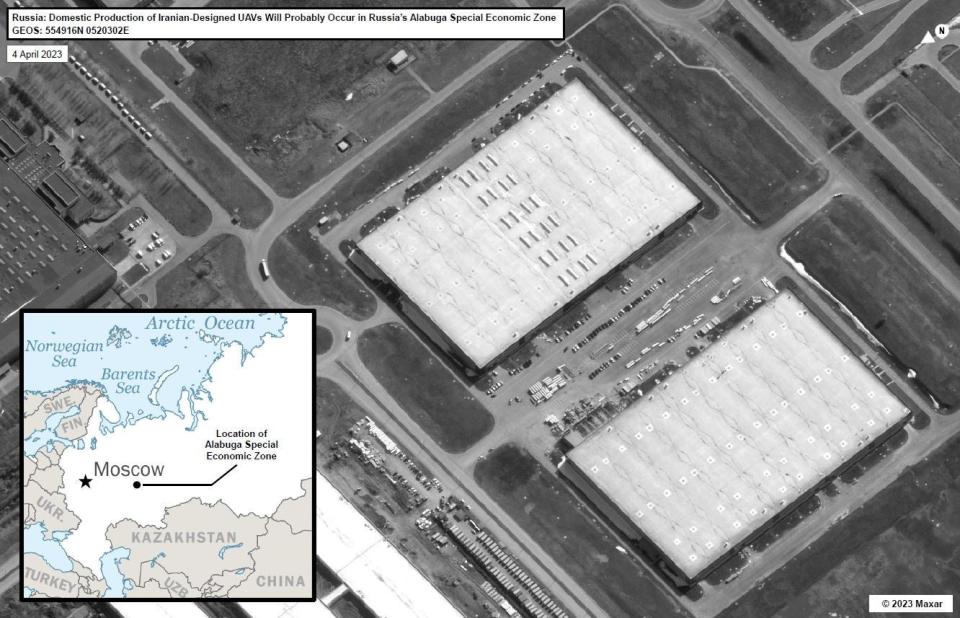
"So that dynamic, I think, has resulted in collusion, if you will, between the Russians and the Iranians, both of whom want to see us out of Syria," according to Grynkewich. "They're [also] colluding with the Syrian regime and trying to push us out of Syria as quick as they can."
In Syria, U.S. forces are deployed on the ground at a number of locations, primarily in support of ongoing coalition operations targeting the terrorist group ISIS. American personnel in the country also operate closely together with local, predominantly ethnic Kurdish groups.
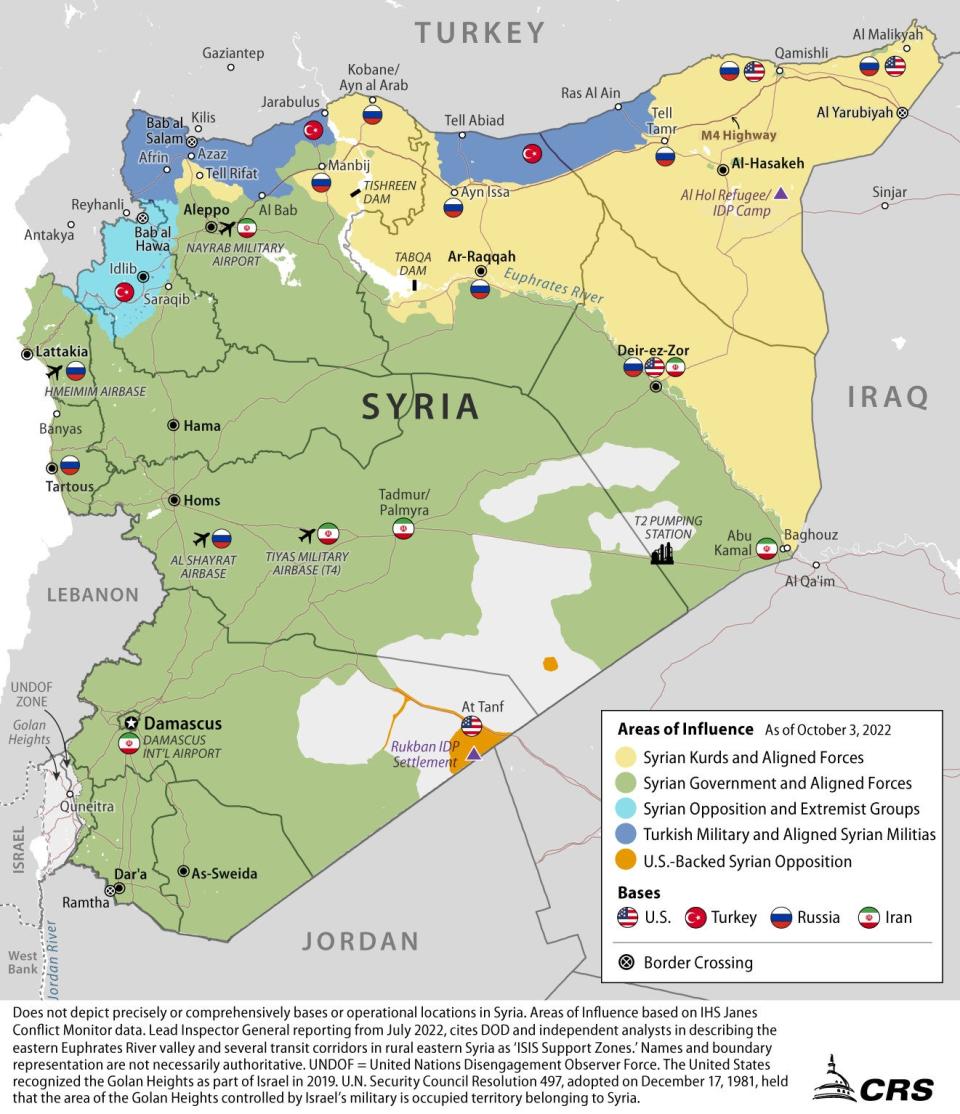
Grynkewich also drew attention more directly to the chill in relations between the United States and Russia since the latter country's launched its all-out invasion of Ukraine in 2022 as a more direct cause for what is happening in Syria. As he has done in the past, the AFCENT commander specifically cited an incident in March in which a Russian Su-27 Flanker fighter collided with a U.S. MQ-9 Reaper drone over the Black Sea resulting in the latter aircraft crashing. This had come in the course of "reckless" and "unprofessional" intercept that included the Flanker making multiple passes very close to the uncrewed aircraft and dumping fuel on it, as you can read more about here.
https://www.youtube.com/watch?v=LqsSYp-51Hs
Though Russian authorities initially denied the Black Sea incident had occurred at all, the pilot of the Su-27 that hit the MQ-9 and his wingman later received medals for their actions from Russian Defense Minister Sergei Shoigu.
https://twitter.com/s_hnizdovskyi/status/1638851852782518273
"If you're gonna give medals to Russian fighter pilots for pouring gas on a UAV and then knocking it out of the sky by crashing into it while they're operating over the Black Sea, then the Russian pilots that serve in other parts of the world, such as Syria, see that and that's going to incentivize them," Grynkewich said.
While Grynkewich says that the situation in the skies above Syria has not risen to this level yet, the situation there does appear to have escalated to a new degree recently. Earlier today, before the AFCENT commander spoke at the Defense One event, CENTCOM had separately announced that Air Force F-22 Raptor stealth fighters had touched down at an unspecified air base in the Middle East and directly linked this to the increasing friction with Russian aircraft in the region.
CENTCOM said that the jets had come from the Air Force's 94th Fighter Squadron, which is headquartered at Joint Base Langley–Eustis in Virginia. It's not clear how many total F-22s are part of this deployment. Pictures and videos the command released along with the announcement showed at least two F-22s touching down, as well as flying together with a pair of F-16C Viper fighters armed with live AIM-120 Advanced Medium Range Air-to-Air Missiles (AMRAAM), AIM-9X Sidewinders, GBU-39/B Small Diameter Bombs, and Joint Direct Attack Munition (JDAM) precision-guided bombs.
https://www.youtube.com/watch?v=5QWQVSjgwiY https://www.youtube.com/watch?v=G97KH08Y164
CENTCOM did not say where the F-22s will be flying from primarily, but analysis of the imagery released so far by open-source intelligence enthusiasts indicates that the Raptors are now at Muwaffaq Salti Air Base in Jordan. This makes sense as this base is a major U.S. air operations hub in the region, especially for operations in neighboring Syria, and has been expanded in recent years.
https://twitter.com/IntelWalrus/status/1669096663892230150?s=20
Those pictures and videos were also all dated June 12, so the F-22s have been in the region for at least two days now.
The F-22s are "part of a multifaceted show of U.S. support and capability in the wake of increasingly unsafe and unprofessional behavior by Russian aircraft in the region," according to CENTCOM's press release. "The Raptors are demonstrating the U.S.' ability to re-posture forces and deliver overwhelming power at a moment's notice... While in the CENTCOM area, the 94th Fighter Squadron will integrate with coalition forces on the ground and in the air."
The Raptor remains the most capable fighter jet in U.S. inventory, able to perform air-to-air and air-ground missions in very high-threat environments, and is also an extremely capable "quarterback" when working together with less capable platforms.
CENTCOM has not yet elaborated on any other aspects of this "multifaceted" display of strength.
"Russian Forces' unsafe and unprofessional behavior is not what we expect from a professional air force. Their regular violation of agreed upon airspace deconfliction measures increases the risk of escalation or miscalculation," CENTCOM commander Kurilla said in a statement. "Alongside our partners and allies, we are committed to improving the security and stability in the region."
The U.S. military's use of snap deployments of F-22s and other combat aircraft to signal resolve in the Middle East is hardly new. However, it has historically been in response to geopolitical friction with regional actors, particularly Iran, and has generally not been explicitly framed as being directed at any specific country. In the current context, it's also interesting to note that Raptors were used in the early 2010s to escort U.S. drones flying over the Persian Gulf after a spate of harassment by Iranian combat jets.

Since March, Lt. Gen. Grynkewich and Gen. Kurilla have both been very publicly drawing attention to an apparent increase in malign Russian activity directed at American forces operating in the skies over Syria and on the ground in that country.
Russian aircraft have been “increasingly bellicose in how they're approaching us,” Lt. Gen. Grynkewich had said in an interview with Defense One back in April. "They're maneuvering aggressively against us when our protocols would say we're supposed to stay… several miles apart and just monitor each other."
“They're aggressively maneuvering, almost like they're trying to dogfight, if you will," Grynkewich added at that time. "That's very concerning."
Also in April, AFCENT released two videos, seen below, that it said were examples of this kind of Russian activity in the skies over Syria and data about its increasing frequency. The command said there had been 63 violations of established deconfliction protocols just between March 1 and April 19, as well as 26 instances where "armed Russian fighter aircraft" flew directly over U.S.-led coalition positions on the ground.
https://www.youtube.com/watch?v=X8qTEzIYcdI https://www.youtube.com/watch?v=uYv73zkzvsw
It is important to note that it remains unclear just how dramatic an uptick in malign Russian activity this really is compared to how things have been in the past. There have been protocols in place for years now that have been intended to deconflict U.S.-led and Russian operations in Syria. American officials have accused their Russian counterparts of violating them routinely. In 2017, the Pentagon said that Russian aircraft were zipping across a key deconfliction boundary in then in place between six and eight times daily.
Aggressive Russian intercepts in the skies over Syria and flyovers of sites on the ground where U.S. forces are located are known to have occurred in the past, too. As Grynkewich reiterated today, this kind of activity is hardly limited to the Middle East, either.
In addition, just last year, Russian aircraft conducted actual air strikes on multiple occasions explicitly targeting U.S.-backed local forces in the country.
In September 2022, a Russian Pantsir air defense system fired on a U.S. MQ-9 Reaper flying over Syria in another example of escalation before this apparent latest uptick in friction. The War Zone was the first to get on-the-record confirmation of that incident. The missile the Pantsir fired reportedly detonated within around 40 feet of the drone and damaged it, according to Air & Space Forces Magazine.
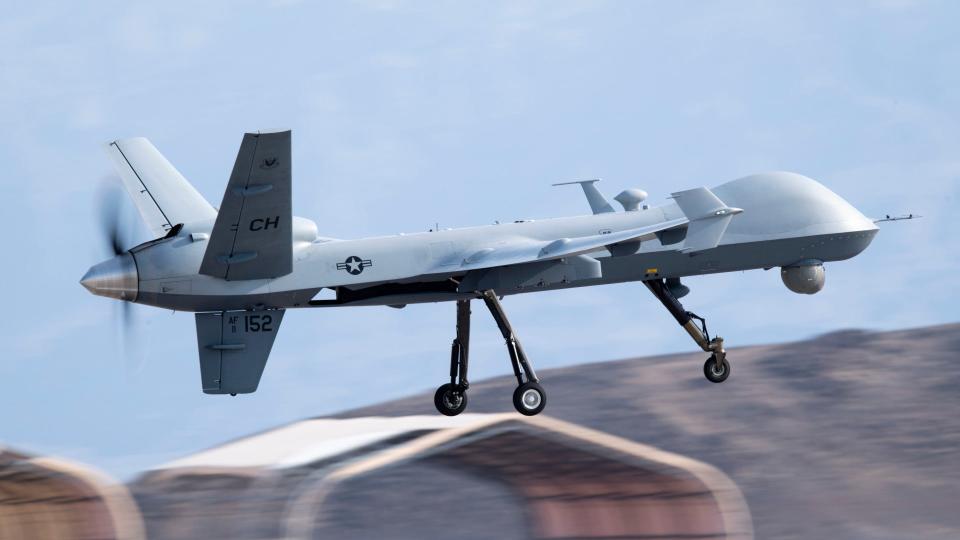
While testifying before members of the Senate Armed Services Committee in March Gen. Kurilla acknowledged that the "unprofessional and unsafe behavior of the Russian air force in the region" is "not new." However, he did stress that "we have seen a significant spike since about 1 March in Syria."
"Just in the last few days, and most recently this morning, the Russians continued to engage in that kind of provocative behavior," Lt. Gen. Grynkewich said during the Defense One-hosted chat today. "We're trying to maintain a de-escalatory posture, we do maintain that de-escalatory posture, but the Russians continue to try to pressure our presence."
How things will continue to evolve now with the arrival of the F-22s as part of a broader CENTCOM show of force remains to be seen.
Contact the author: joe@thedrive.com

